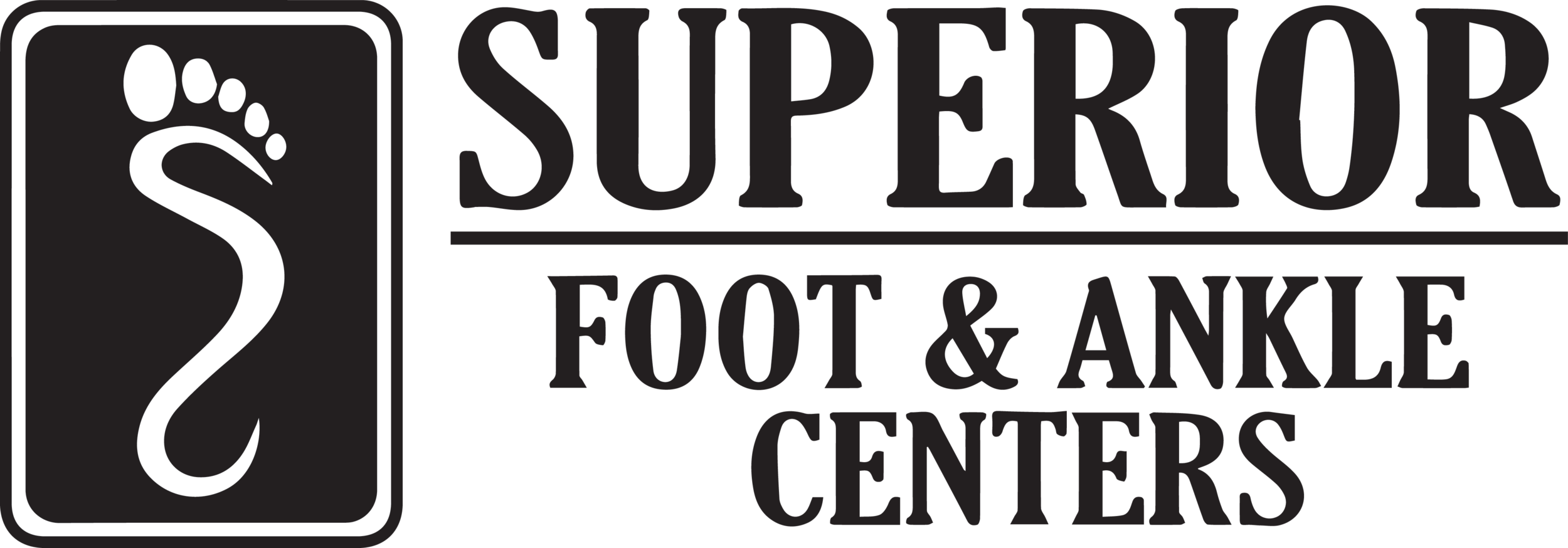Our Foot Doctor in Marquette, Escanaba & L'Anse, & Upper Peninsula, MI can help you with your bunions or hammertoes
BUNIONS
WHAT IS A BUNION?
Bunions are one of the most common foot disorders treated by Dr. Conway McLean. In fact, bunions are one of the most common disorders treated by most podiatrists across the country. More than half the women in America have bunions, a common deformity often blamed on wearing tight, narrow shoes. Bunions cause the base of your big toe (Metatarsophalangeal Joint) to enlarge and protrude. The skin over it may be red and tender. This can be acquired through time or it can be congenital (you got it from your family).
Wearing any type of shoe may be painful when you have a bunion. The joint involved flexes with every step you take. The bigger your bunion gets, the more it hurts to walk. Bursitis (inflammation) may also set in. Your big toe may angle towards your second toe, or even move all the way under or over it. The skin on the bottom of your foot may also become thicker and painful.
Pressure from your big toe may force your second toe out of alignment, sometimes causing it to overlap your third toe. If your bunion gets too severe, it may cause difficulty in walking. Your pain may become chronic and you may develop arthritis.
Most bunions can be treated conservatively with wider & softer shoes, pads to relieve the pressure and/or medications. If this does not help then surgical treatment is indicated. Contact our Podiatry team for an appointment today, Our bunion specialist, Dr. Conway Mclean is here to help.
Bunion Surgery - Bunionectomy
Bunion surgery, or bunionectomy, realigns the bone, ligaments, tendons and nerves so your big toe can be brought back to its correct position and the bump on the inside of the joint removed. Many bunion surgeries are performed on a same-day basis (no hospital stays) using a local anesthesia. During your recovery it is common to have pain and swelling. This swelling and stiffness may be persistent for several months.
HAMMERTOES
A bent toe can become an extremely painful condition, and is generally termed a hammer toe. Many complications can occur from a bent toe, but what is just as interesting is why these deformities develop. Just so we can immediately dispel the myth, it is rarely the result of wearing shoes that are too small. That can certainly be a factor, but, statistically speaking, much more commonly, it is the result of abnormal foot architecture. It’s critical to understand that the positioning of the toes is a delicate balancing act, with a surprising number of structures essential to the alignment of each digit. Each has their exact place in the tightrope act that keeps the toes straight.
When, for example, the arch rolls downward too much, the alignment of this complex arrangement is disturbed, and results in some of these ligaments and tendons pulling in abnormal directions. The end result is very often, a buckling of the digit. Eventually, if this rolling of the arch is severe enough, or sufficient time passes, a rigid hammertoe results. Alternatively, if someone’s arch is too high, again, an abnormally bent toe will result. Contracted digits, such as those discussed, have a variety of consequences, some that are not so obvious. Clearly there is going to be pressure to areas that are not adapted to withstand it. The infamous corn is one of the most common (which starts simply as a callus on a toe). Alternatively, when the toe is pulled up at the ball of the foot, the toe will push down on the metatarsal bone that it is attached to. In turn, the metatarsal is then pushed more forcefully into the ground, causing pressure to the ball of the foot.
To most, it is not so obvious that the pain at the bottom of their foot is the result of the bend in the toe that has been slowly developing. There are many ways to deal with a painful hammer toe, some fairly simple, but these are often less beneficial. The number of different pads that exist for cushioning and protecting a toe could fill a book (its called a catalog!). Naturally, these only help if you reapply them every day. Shoe modifications used to be more practical when people wore leather shoes that could be stretched over the prominent toe.
The only “cure“ is to straighten the toe, which doesn’t have to be a difficult process. The most severe digital deformities require a traditional “open“ technique to repair, in which a long incision is made over the structures that need to be rearranged. When less advanced, the work can be done through small openings, a concept termed minimally invasive surgery. This idea, of causing as little trauma to the skin and soft tissues as possible, is being developed for procedures all over the body. When used for repair of a hammer toe, it generally means drastically reduced recovery time, with less risk of scarring, infection, swelling, or post-operative pain. In other words, hammer toes are not an irreparable, painful condition.
One take-home message?….don’t live with pain…it’s bad for your quality of life! Schedule an appointment with our practice, Superior Foot & Ankle Centers, for a complete evaluation and let us help you find relief from hammertoe pain.



